Taken literally, Gertrude Stein’s famous phrase “Rose is a rose is a rose” might have raised the collective eyebrows of a few scholars of the rose family (Rosaceae). After all, more than four thousand species and one hundred genera make up this complex family of woody and herbaceous plants. Robert Frost rendered these botanical relationships more accurately, writing, “The apple’s a rose, / And the pear is, and so’s / The plum, I suppose,” yet even he failed to mention less-lyrical genera like Spiraea, Cotoneaster, or the elusive Prinsepia, not that anyone could blame him. Frost was no more a taxonomist than Stein, or, ahem, a lot of landscape designers. Like poets, we landscape designers are primarily artists. When we develop botanical collections, plant specimens are the stars, and the genius lies in their artful and memorable arrangement. Strict taxonomic accuracy has never been our primary role.

When the Julie Moir Messervy Design Studio (JMMDS) was hired to help redesign the Arnold Arboretum’s Bradley Rosaceous Collection (BRC) in 2007, the objective was simple. We wanted to improve upon the sense of space in the existing garden without disturbing the living collection or dishonoring its legacy. We wanted the garden to be lightly educational, a place where visitors could experience taxonomic order in a beautiful, satisfying setting. We were determined to use an organizational structure that visitors could intuitively understand through passive experience, whether or not they were botanical scholars. Mostly, we hoped that the garden would appear rejuvenated, while still reverent to the surrounding landscape that was developed by Frederick Law Olmsted and Charles Sprague Sargent, the first director of the Arboretum.
All of this—simple as it initially seemed—was no minor responsibility. The list of stakeholders was vast and intimidating. There were donors to consider and staff to please. We had to be respectful of the Arboretum’s legacy, honoring the institutional position within both Harvard University and the City of Boston. We even had to consider the reputation of the esteemed plants themselves. Julie Moir Messervy had already been inducted into the Arnold’s folds. In addition to lecturing there on numerous occasions, she designed the Linda J. Davison Memorial Path that winds along Bussey Brook. She also planned the landscape surrounding the granite bench that overlooks the BRC.
Despite my role as project manager, I was a relative newbie on this scene, having just started working with JMMDS. I completed my MLA at Cornell in 2003, where, under Professor Don Rakow, I studied some of the world’s most hallowed gardens: Longwood, Kew, and the Arnold Arboretum. My arrival at the BRC felt monumental to say the least. I knew I was on sacred grounds.
When we began our work, the BRC contained over forty Rosaceous genera and up to four hundred different taxa. Keeper of the Living Collections Michael Dosmann (who then held the title of Curator) provided a “desiderata” of seventy-five additional taxa that the Arboretum wanted to incorporate into the design. The existing collection was not presented in an obvious order within the family itself. According to feedback from gardeners and staff, many visitors didn’t understand the taxonomic connection between woody Rosaceous genera and plants in the Arboretum at large. Some plants were duplicated; others were overgrown. And visitors and staff both complained that most of the Rosas had a very short season of bloom, primarily in the month of June, and that even then, many of their differences were subtle and hardly obvious. Much of the time, the roses presented themselves as a sea of thorny stems. Each rose in the vast collection could be mistaken as just another rose. A rose was a rose was a rose.
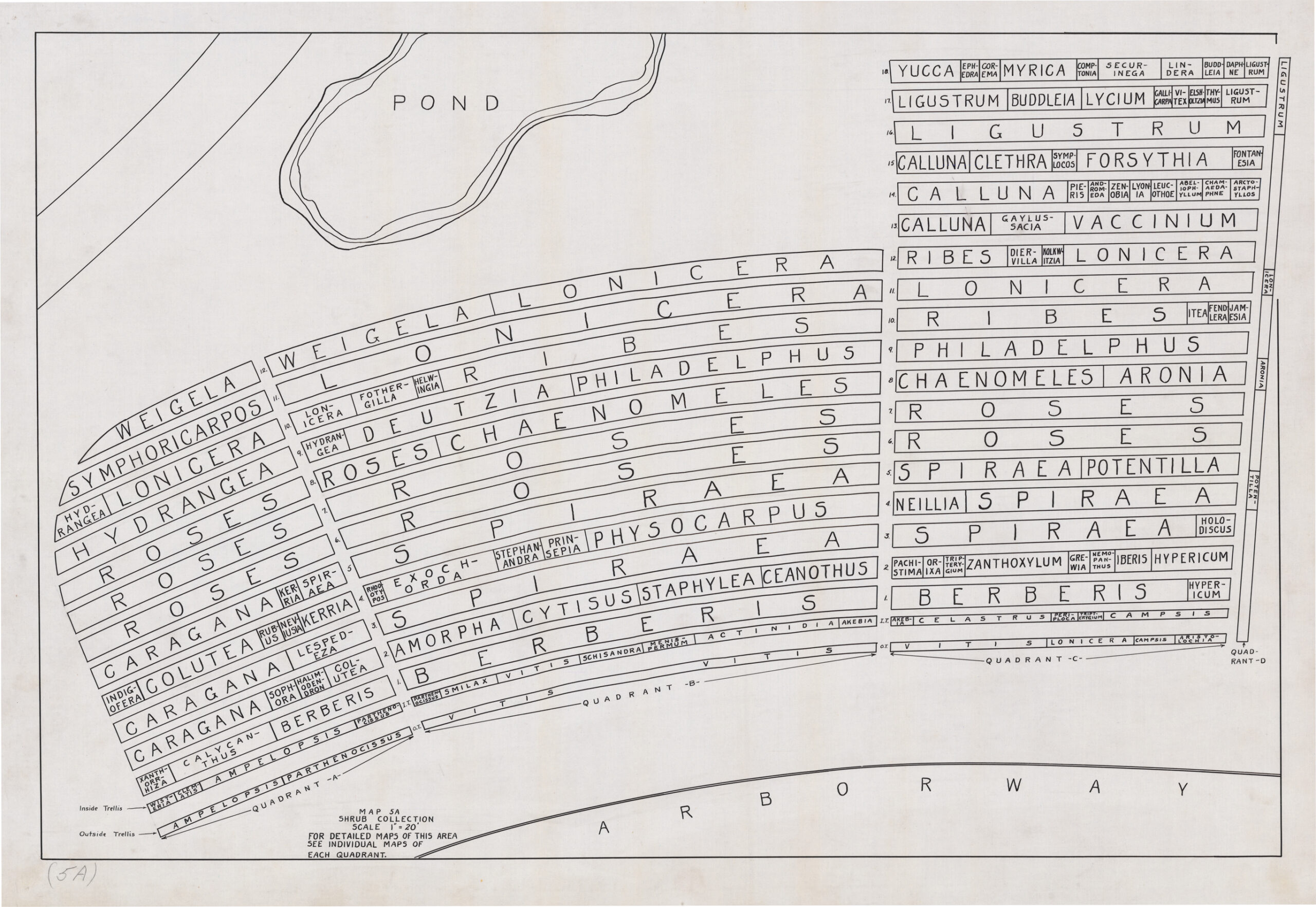
Moreover, although the beds were clearly defined, we wanted to improve upon the overall sense of place and intensify the experience of journey. We use “sense of place” to mean everything that defines a unique and recognizable landscape. Take Central Park, for example: A visitor can look up at the skyscrapers and then look down to see the Reservoir, the Great Lawn, and the stony bridges. Even with eyes closed, they will experience the sounds and smells that define the iconic city park. All of this contributes to their sense of being located in a memorable place in the world—exactly what we wanted for the BRC.
~
Our creative process always involves iteration, beginning with the development of an overarching “big idea.” We considered a wide range of thematic concepts for the BRC. We envisioned the botanical structure of a rose flower, for example, with its five petals and sepals as a template for bed shape and placement. We compared contemporary and classic interpretations of the rose in folklore, religion, literature, and romance. These ideas were manifested in overlays of pencil upon tracing paper, often times starting and ending as scrawled words in the margins: “What Rosaceous plants are mentioned in Shakespearean plays? What was the significance of the rose in world religions? How are Rosaceous plants used medicinally?”
We sketched routes and journeys for the pedestrian to travel from place to place, borrowing inspiration from Olmsted’s pastoral style. We sketched potential bed outlines, envisioning new outdoor rooms and meeting spaces, new places to sit, and new views to see. The resulting documents were beautiful but chaotic, a palimpsest of possibilities. Still, the big idea hadn’t taken hold.
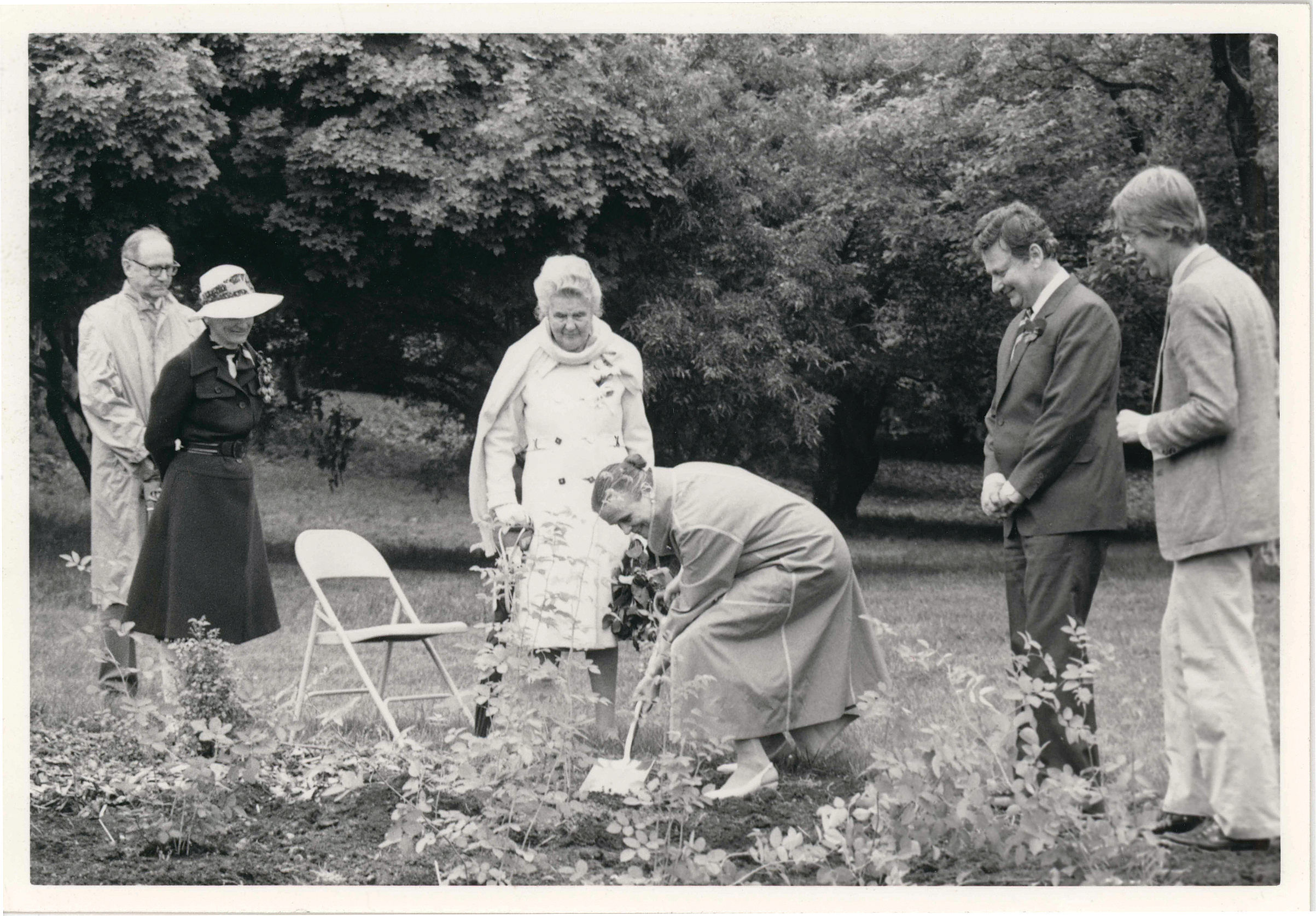
At JMMDS, we recognize that a big idea can evolve from many places. When Julie worked with Yo-Yo-Ma on her design for the Toronto Music Garden, they used Bach’s Suite no. 1 in G Major for Unaccompanied Cello as a musical template. The resulting garden is a celebration in six movements—prelude, allemande, courante, sarabande, minuet, and gigue—all rhythmically expressed as wooded paths, great spiraling landforms, bee-filled plantings, and oversized grass steps. JMMDS’s design for the Inspiration Garden at the Shore Country Day School in Beverly, Massachusetts, on the other hand, took the feel and form of the school’s mascot, the beaver. We recreated habitat with native plantings and erected an outdoor classroom shaped like a beaver lodge.
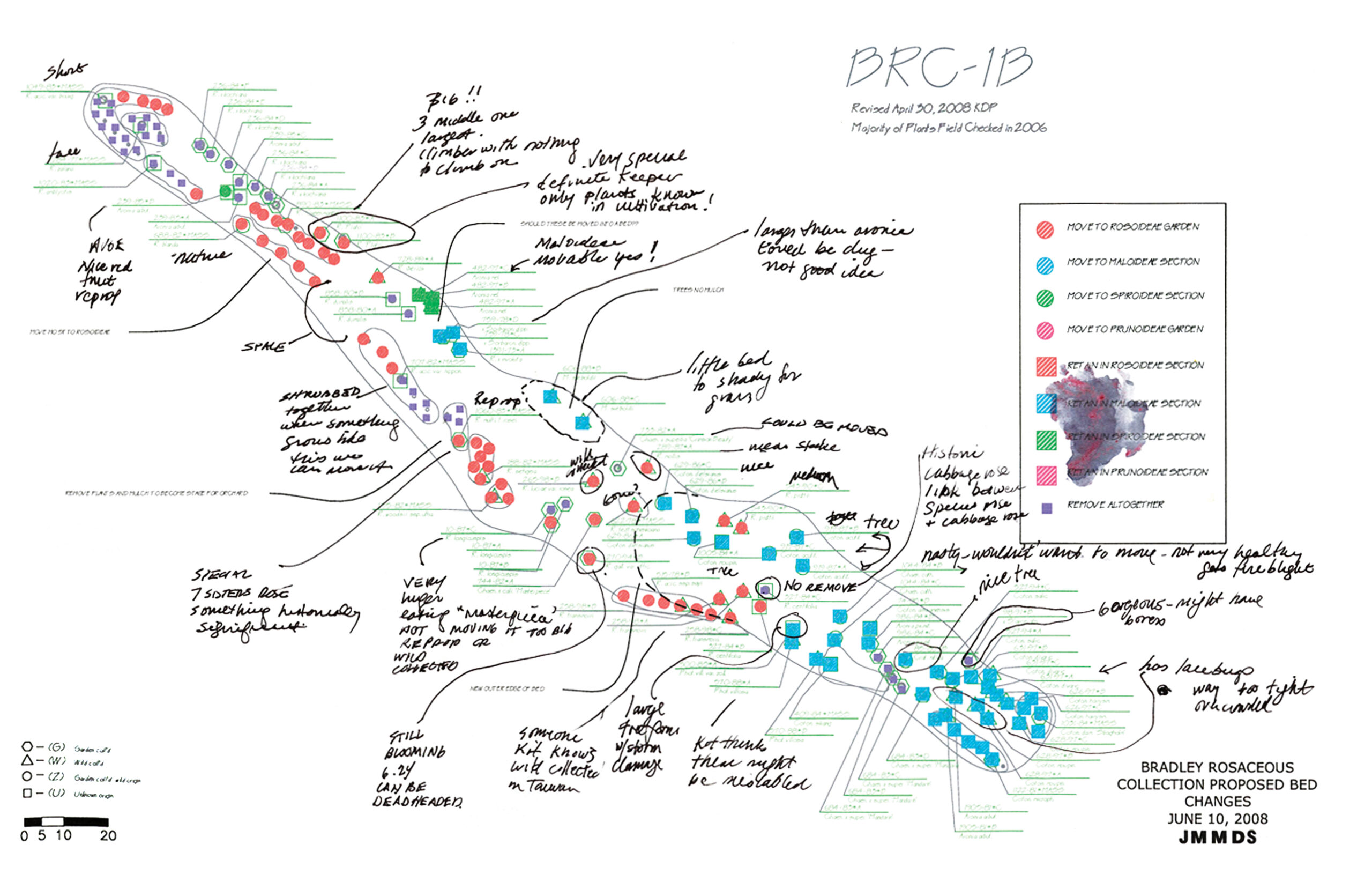
While brainstorming the big idea for the BRC, we looked again at a base map the Arnold had provided. It included a key with four subfamilies: Rosoideae, Spiroideae, Maloideae, and Prunoideae. As it turned out, these subfamilies had already become outdated, yet from a design perspective, the groupings created a useful ethnobotanical order. Rosoideae traditionally included, among other things, roses and brambles (Rosa and Rubus), so for that subfamily, we imagined a classic rose garden with arbors, benches, and other ornamental features. Maloideae contained apples (Malus) and hawthorns (Crataegus), along with a number of larger tree species, so we thought of an orchard planting. Prunoideae inspired us to think of ornamental trees blooming at a Japanese sakura festival, because the most dominant genus in the group includes cherries and plums (Prunus). Spiroideae—with members like nine-bark (Physocarpus), pearl-bush (Exochorda), and spirea (Spiraea)—brought to mind a well-ordered shrub collection.
Obsolete or not, this historical classification helped us organize a series of places, each with their own beauty and meaning, and all connected by a journey through the larger family. We tentatively named these components the Rosoideae Roundabout, the Maloideae Meander, the Prunus Promenade, and the Spiroideae Stroll. Keeping this old taxonomic organization had the added benefit of allowing us to maintain the larger, less-movable trees in their place, given that many were grouped taxonomically already. This allowed the greatest amount of transplanting and bed realignment to happen with the more manageable roses and shrubs. It also made the plant groupings easy to comprehend on a basic level. We hoped that a visitor might be able to travel from area to area and immediately sense order within the groupings.
The Arnold staff and donors tried to help us make this plan work. They steered us away from the literal interpretation of the old subfamilies and suggested slight verbiage shifts that would allow for a sort of compromise of ideals between taxonomy and design.
“Let’s call it a ‘collection of arborescence’ rather than a literal orchard,” one person offered.
“Fruiting arborescence?” we countered.
To that they agreed.
By “arborescence,” of course, we meant “trees.” That is the way botanists and landscape designers talk. Sometimes we pontificate in French, Latin, and Greek, other times in ultra-syllabic versions of regular English (“fenestration” instead of “windows,” “rectilinear” instead of “rectangular”).
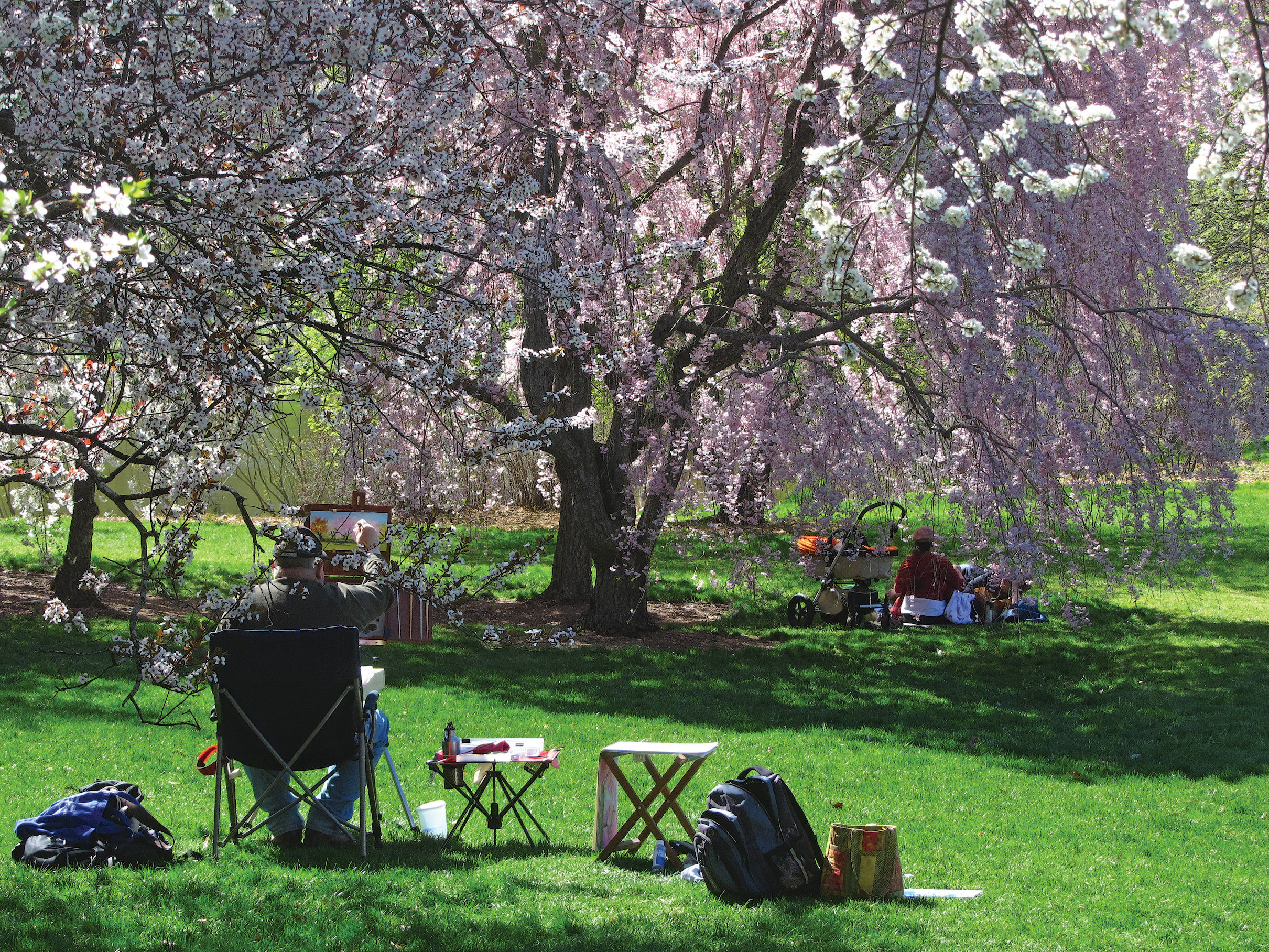
Yet, to communicate with the rest of the normally speaking world, we needed to tone down our jargon. So we retracted the place names Maloideae Meander and Spiroideae Stroll, which were a mouthful anyway, but we maintained the idea of shrub- and orchard-like collections. Rosoideae Roundabout seemed to work, especially since this subfamily was still legitimate, but the name was reduced to the Rose Roundabout for good measure. The Prunus Promenade was too lyrical to abandon. We had found our big idea.
~
Cost, availability, and establishment time almost always influence plant selection and expectations. When we design a garden, we make plant choices based on nursery catalogs and availability lists. We’re also used to waiting a bit before our designed landscapes grow into themselves. That is just part of the practice. For a perennial garden to reach its prime, three years is the normal window. Most practitioners plan for a fifteen-year grow-in period for trees. These establishment times assume that, at installation, perennials are gallon-sized and trees have a 1.5- or 2-inch caliper trunk. Even this can be too small and slow for some clients. In those cases, we can crane in mature twenty-foot trees with six-foot root balls for an immediate impact. This is costly but instantly satisfying.
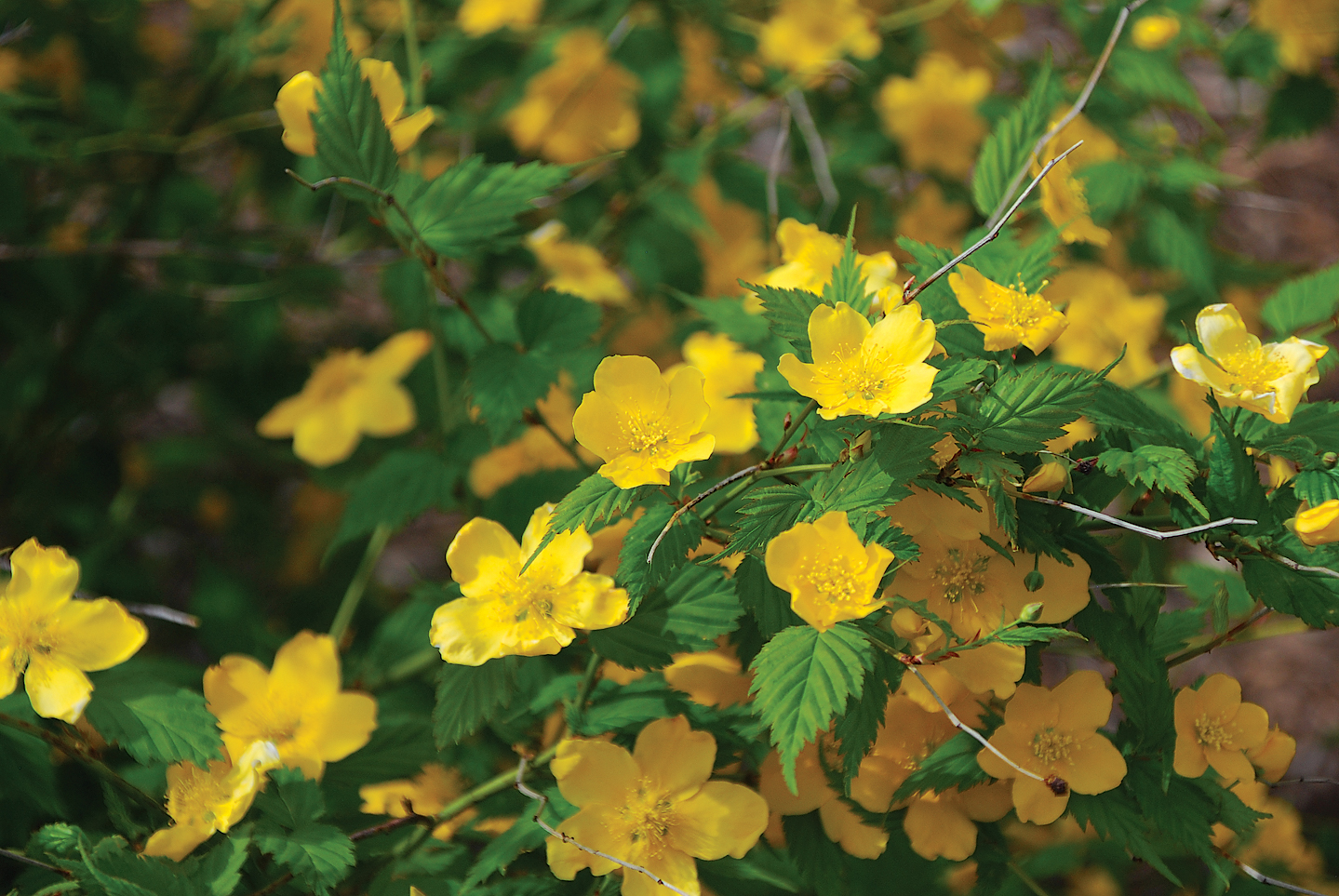

The BRC is no average garden, however, and the Arnold certainly doesn’t require instant satisfaction. As part of the larger living collections, every plant in the BRC has a standardized accession number, and all new acquisitions must meet the requirements laid out in the Living Collections Policy. Many new accessions are wild-collected as seed and then grown in the Arboretum’s nursery. Even the addition of new cultivars can take time. For instance, the crabapple Malus ‘Donald Wyman,’ which the Arboretum introduced in 1970, was repropagated from the original tree, even though a large specimen could have been purchased from a commercial nursery. With these considerations in mind, it made sense to tackle the Rose Roundabout first, because those plants were the quickest growing and most easily movable. The completion of the Prunus Promenade and orchard collection could wait.
~
New and unfamiliar plant material was another obstacle for our team to clear. Few genera in the BRC were completely new to us, but more often than not, we were in the practice of working with more widely available, commercially propagated plants. We have had much less experience dealing with straight (and often obscure) species like the ones that fill the BRC. Delving into Rosoideae was particularly demanding with a large number of plants that seemed, at first glance, to have similar outward characteristics in the off-season: almost all were thorny and shrubby. We needed to learn more about the specimens in order to make design decisions. As the resident plant person at JMMDS, I was sent to the Arnold to receive some additional schooling.
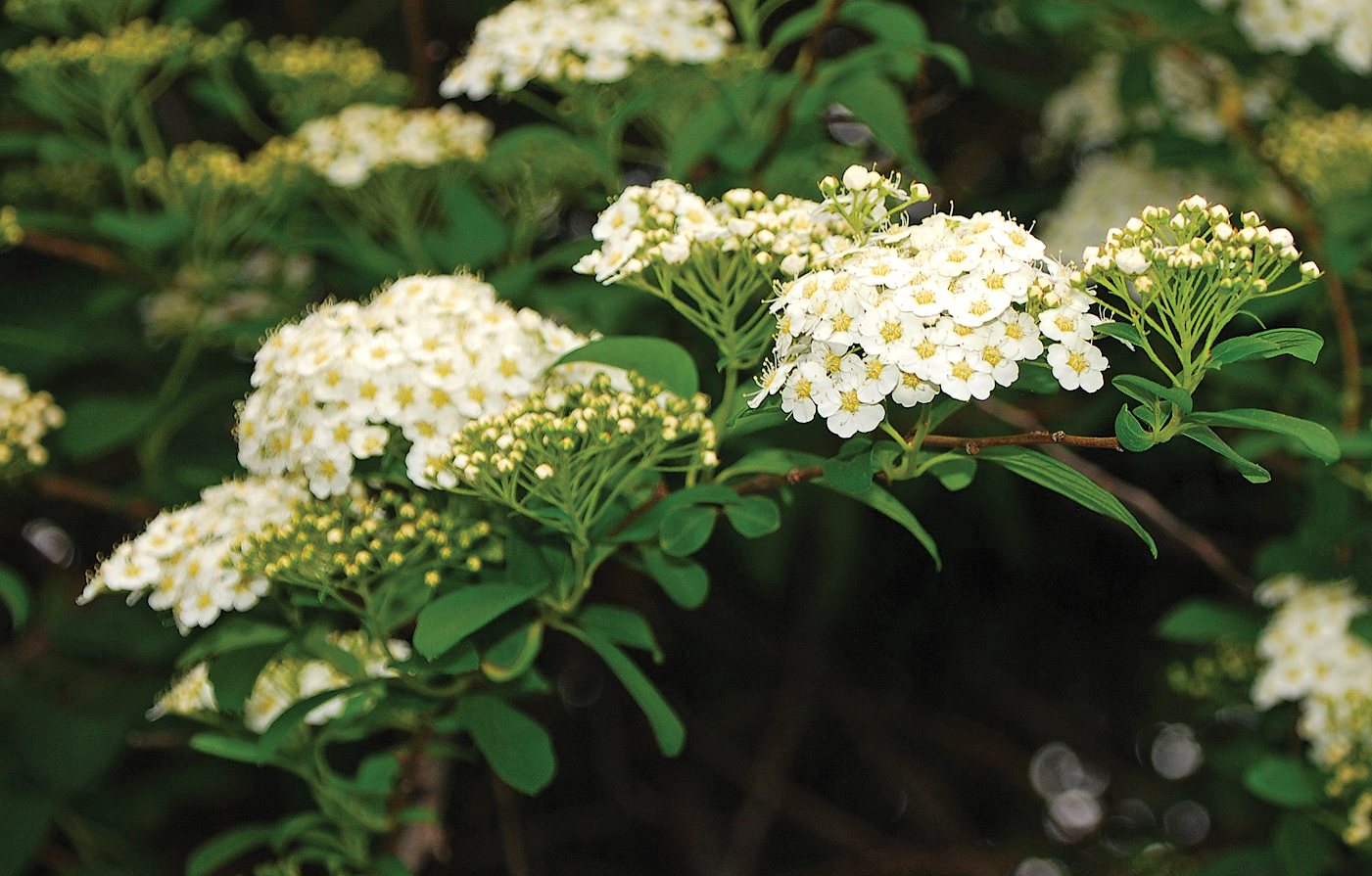

I spent days walking around with Kit Ganshaw, the long-time BRC horticulturist, discussing the particulars of each plant. Within Rosoideae alone, I learned that the Arnold had a large planting of Rosa ‘Justine Mee Liff’, a cultivar named for the first woman to serve as Boston parks commissioner. The cultivar ‘Duchesse de Montebello’ was an important gift from the Bradley family and needed to be preserved, especially as we ultimately reduced the garden in that location to make way for a new path. While the yellow-flowered incense rose (R. primula) is the first rose to bloom in the garden, the single specimen of climbing prairie rose (R. setigera) was significant in that it blooms in July, after most other species are done. The apple-scented blossoms of the sweet-brier rose (R. eglanteria) feature in the writings of Shakespeare. The white-stemmed bramble (Rubus cockburnianus) provides great winter interest with its showy stems, and Sweginzow’s rose (Rosa sweginzowii) is noticed for its glorious hips. Mount Omei rose (R. omeiensis) grows up to twelve feet tall, has bright red thorns and an atypical arrangement of four petals to its flower. A trellis-worthy cultivar of Scotch rose (R. spinosissima ‘Plato’) was deemed a very special plant because it came from the Duke of Buccleuch’s estate garden—considered one of the premier rose collections when Sargent received a shipment of cultivars in 1914—and it may be the only specimen of ‘Plato’ remaining in cultivation. The claim of fame for serafin rose (R. serafinii), according to Kit, is that is has the “nastiest hooks” in the whole collection. Whew!

Additionally, we identified problem plantings. Some masses like prickly rose (Rosa nipponensis) needed reduction. Others, like wood rose (R. gymnocarpa) needed increasing. R. × nitidula was too tall for the front of the garden, while interior rose (R. woodsii) and an unusual Taiwanese species (R. transmorrisonensis) were too short for the back. Species like red-spined rose (R. nitida) and swamp rose (R. palustris), both wet-loving, might have been better suited near the ponds, and longtooth rose (R. longicuspis) needed a trellis. Some of the catalogued plants were even missing from the field, including the namesake Arnold rose (R. × arnoldiana ‘Arnold’).
~
Clearly, reorganization was in store. Ultimately, we would suggest removal of sick and duplicated plants, reduction of colonies, and organization by height, habit, and bloom period to create densely alluring focal points throughout the summer. We fine-tuned the shape of the beds to improve circulation, pauses, and views. We also designed a main entrance and a circumferential route around the garden. Still, even with restructuring, we were concerned that some distinctions between plants might be too subtle for the average visitor.
Our instincts wanted to make the whole collection more photogenically engaging. We wanted to intersperse herbaceous rose family plants, like lady’s mantle (Alchemilla mollis), meadow sweet (Filipendula rubra), and avens (Geum spp.), between colorful rose hybrids. The Arnold pushed back on that idea, favoring a more dignified, uncomplicated (if not staid) order to things. Our mixed-garden proposal also complicated the maintenance practice at the time, which emphasized a clean contrast between mulch and woody specimens. That approach is easier to maintain, since any invading plant can easily be identified as a weed. Our compromise was to integrate longer-blooming hybrid roses like ‘Radtko’ (Double Knockout®), ‘Chuckles’, ‘Bucbi’ (Carefree Beauty™), and ‘AUSbord’ (Gertrude Jekyll). We still dream of incorporating more herbaceous members of the rose family. In the very least, we want to eliminate views of mulch.

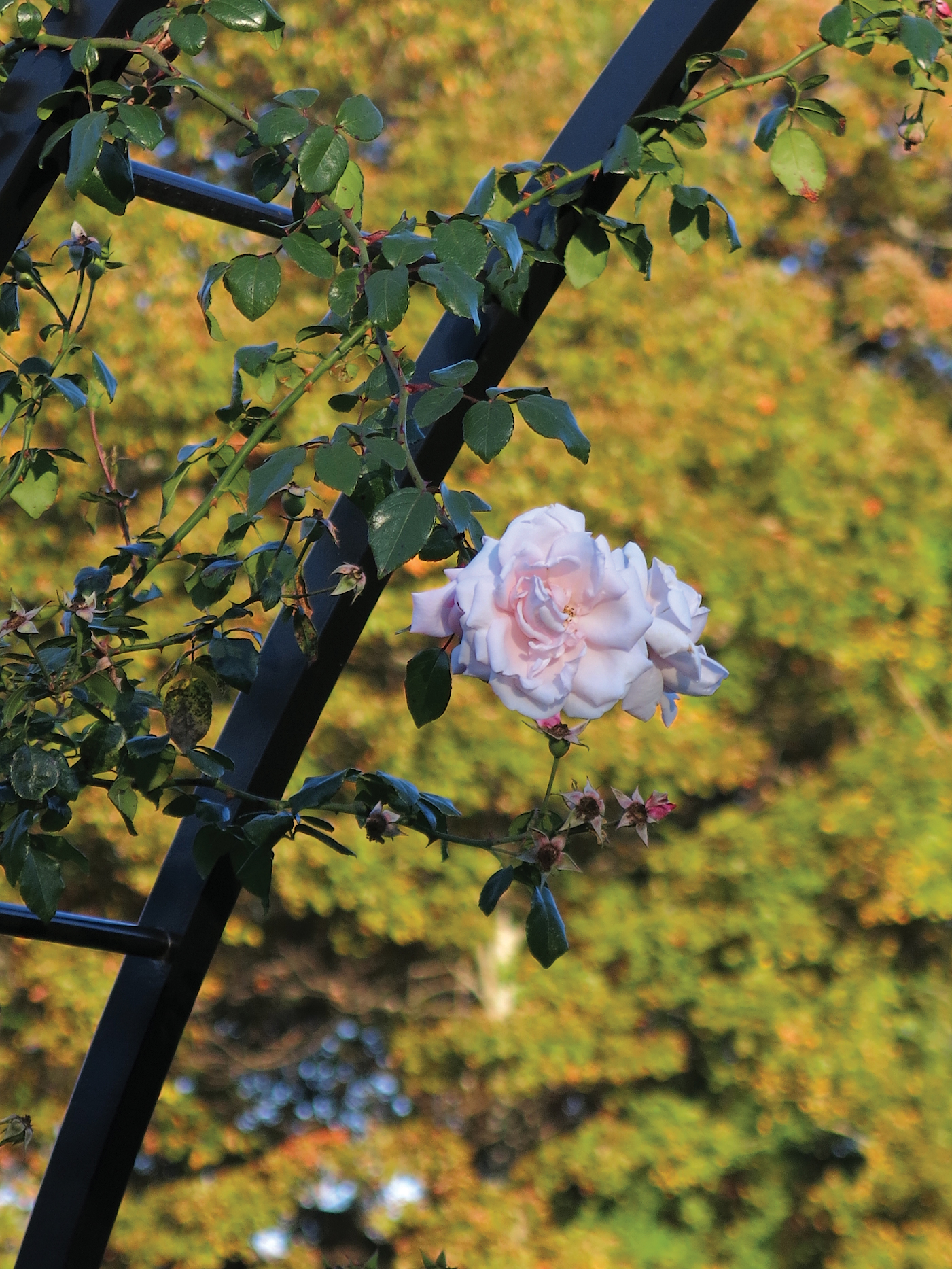
To honor philanthropist Elizabeth Cabot Sluder, we designed a new arched entrance to the Rose Roundabout and put metal artist Peter Andruchow of Wovensteel to work. JMMDS designer Jana Bryan incorporated features from the Arboretum’s wrought-iron main entrance into the design, and she also added hallmark puddingstone boulders at its base. We selected a delicate, pink climbing rose (Rosa ‘New Dawn’) to clamber across the archway, a departure from the shrubbier citizenry of the Roundabout. The plants were shielded within the protective hollow of the arch’s tri-scrolled feet.
~
When we evaluated existing plants in other parts of the garden—the orchard, the Prunus Promenade, and the shrub collection—it was mostly for location, health, quantity, and appearance. Unlike the Rosas, few of these plants came with noteworthy backstories, other than a rare Chinese species of mountain ash, Sorbus yuana, which was one of the first accessioned in the United States.

We identified some plants as stand-out ornamental specimens, including Toringo crabapple (Malus sieboldii), intermediate shadbush (Amelanchier intermedia), and petalless cherry (Prunus apetala), along with the grove of quince trees (Cydonia oblonga). We noted that the trio of Siberian crabapples (Malus baccata) were beautiful trees that could offer a transition between the orchard and shrub collections. We also catalogued a large and beautiful cultivar of black cherry (Prunus serotina ‘Cartilaginea’), a tall and stately example of Gray’s chokecherry (P. grayana), and an early blooming favorite of visitors, cyclamen cherry (P. cyclamina). One unconventional hybrid, (× Sorbaronia sp.) × (× Sorbocotoneaster sp.), was so appealing that Julie marked it as something we should find in the trade. We haven’t seen it yet.
In order to create distinct areas within these portions of the landscape, we needed to move a lot of plants around. One of our aims was to remove mulch beds around large standard trees, allowing the trees to spring directly from the lawn, while reserving beds for shrub groupings. Additionally, we wanted to improve upon the beauty and understandability of the space by reducing clutter, redundancy, and confusion. This meant moving plants like Nantucket shadbush (Amelanchier nantucketensis) out of the Prunus Promenade, despite their beauty. To give more space to the handsomely fruited medlar (Mespilus germanica), it was necessary to remove a Wilson spirea (Spiraea wilsonii) that had invaded its folds. This was fine by Kit, who was very comfortable reducing size and clutter through pruning.
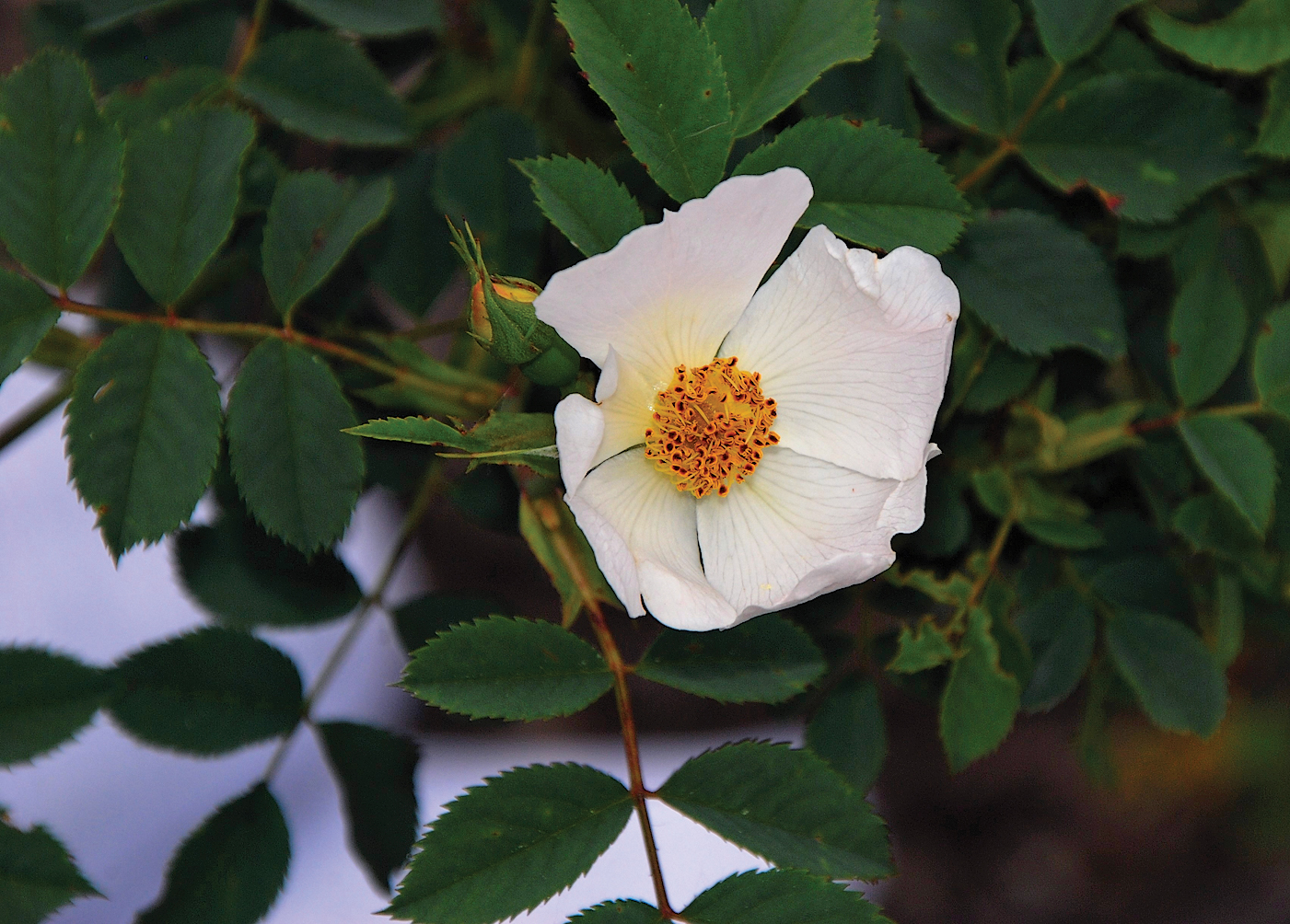

It was actually Kit who introduced me to the term rejuvenation pruning, the process of pruning a shrubby plant to the ground in order to bring about a new and improved flush. While I was not in the practice of making such sudden and brutal cuts on slower-growing plants, the Arnold, on the other hand, is a practical institution and nothing if not patient. This willingness to wait and withstand the awkward stages actually freed up decision making. Rather than removing a rangy or overgrown plant, we could opt to rejuvenate it instead. Specimens of Laland firethorn (Pyracantha coccinea ‘Lalandei’), flowering quince (Chaenomeles), and spirea (Spiraea) were all candidates for this treatment.
Some plants were outright deaccessioned because of age, disease, redundancy, bad form, or incorrect placement. While a one-hundred-year-old dwarf Siberian peashrub (Caragana arborescens ‘Nana’) escaped the chopping block, several large and lovely Kousa dogwoods (Cornus kousa) did not. Their removal from along Willow Path was perhaps the most painful part of the demolition phase for me. Although their execution papers were signed in the effort to purge non-Rosaceous plants, I mourn their loss to this day.
~
Renewal of the BRC opened spaces for planting new specimens. Since we were not in the position to know the exact plants for future accessions, we designed plantings by genus and habit (e.g., “Malus, arborescent species.”) This allowed Arnold staff the freedom to grow and add new specimens as we moved into the future. In this respect, our role at the Arboretum has been different from other design jobs: We were not the most qualified plant experts on the team. We had to cede that role.
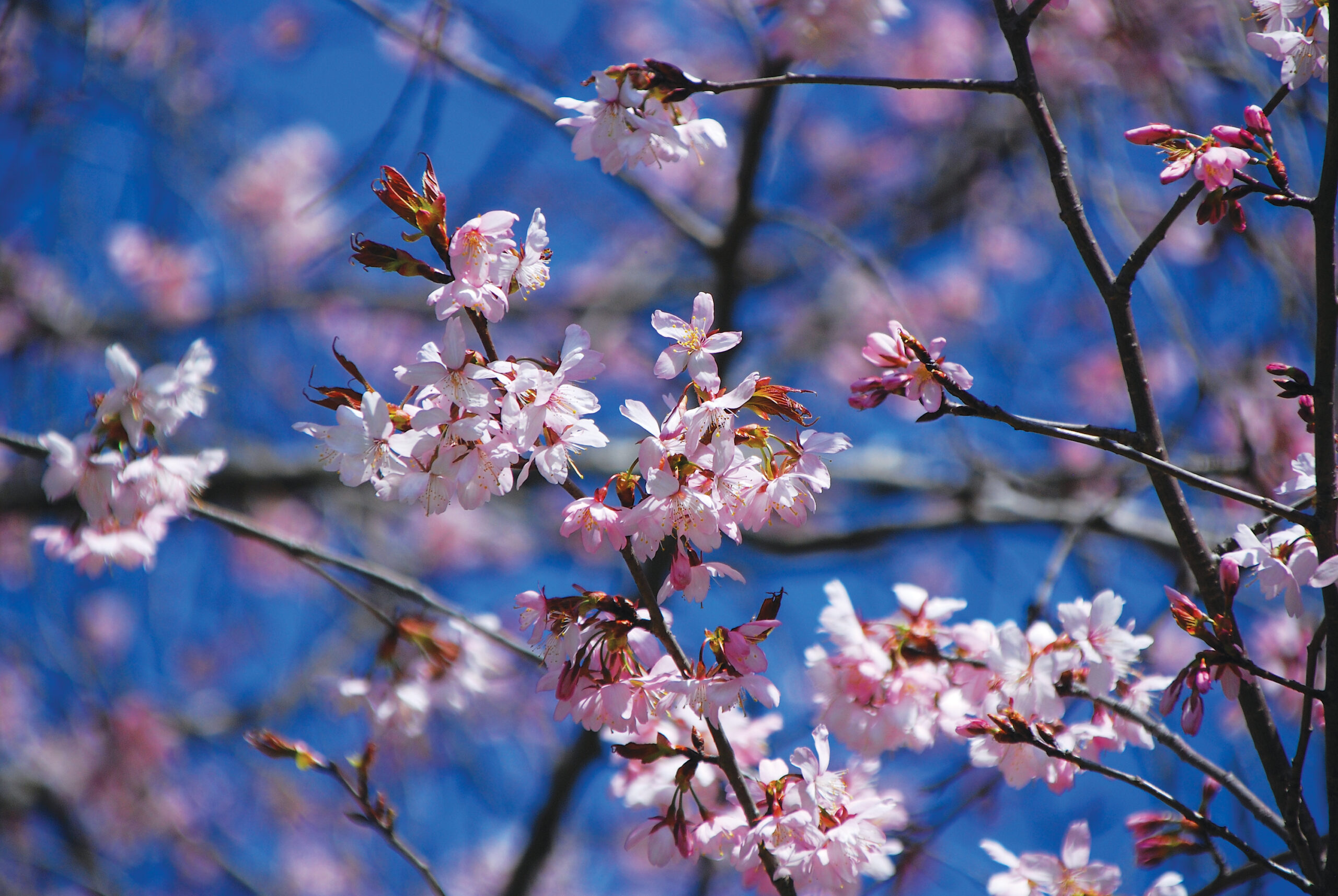
It may be many more years before all of the plants have grown to maturity and our vision of the new BRC is realized. By then, scholarship surrounding plant classification will have continued to shift, as will the garden. This is the challenge faced by gardeners and taxonomists alike: constant momentum. The art of a garden is never static. It sprouts weeds and seeds, and begins to seek its own expression. This is why most garden designers like to remain involved in order to see their plans to fruition. Otherwise we are at the whim of nature, or to whomever holds the pruning shears.
Erica Bowman is a senior landscape architect for Julie Moir Messervy Design Studio, where she manages projects in New England and beyond. She holds an MLA from Cornell University. She also writes for Horticulture Magazine.
Citation: Bowman, E. 2018. What the rose knows: Navigating Rosaceae at the BRC. Arnoldia, 75(4): 2–9; 12–16.
